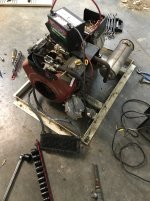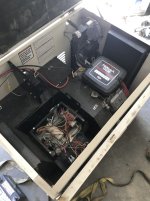4570Man
Super Star Member
- Joined
- Apr 7, 2015
- Messages
- 17,832
- Location
- Crossville, TN
- Tractor
- Kubota M59, Kubota L3800, Grasshopper 428D, Topkick dump truck, 3500 dump truck, 10 ton trailer, more lighter trailers.
So I got what was a previously seized up house backup generator for free. It’s not seized up anymore but it was previously natural gas powered. I suppose I could go to the mower junkyard and get a gasoline carburetor but propane would be easier. It says it runs on either but there’s no instructions. It has a regulator on the generator but a propane bottle has a lot higher pressure than natural gas does. Do I need another regulator for the propane bottle or just a hose to hook the bottle to the regulator?



